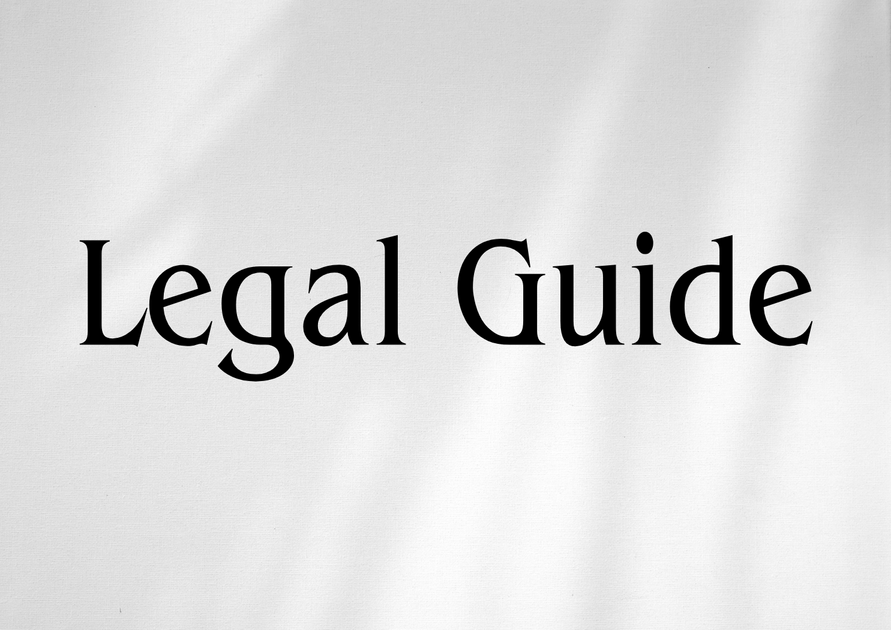Introduction: Mortgage and Collateral Regulations in the UAE Banking Sector
The dynamic evolution of the UAE’s financial, real estate, and banking ecosystem necessitates robust regulatory frameworks, particularly concerning mortgages and collateral. As the nation positions itself as a global financial hub and accelerates major infrastructure and real estate projects, mortgages and collateralized lending have become central to both individuals and corporations. 2023–2025 has seen significant legal shifts with the enactment of updated federal laws and regulatory guidelines, aiming to align the UAE with international standards, enhance consumer protection, mitigate systemic risks, and foster investor confidence.
This consultancy-grade article provides in-depth legal analysis and practical guidance on the latest mortgage and collateral regulations governing UAE banks. Our objective is to clarify current compliance requirements, highlight key legal updates from federal decrees and Central Bank regulations, and offer actionable insights for banks, developers, business leaders, HR professionals, and legal practitioners. Understanding these frameworks is vital to manage risks, ensure compliance, and maximize opportunities in the UAE’s evolving business environment.
Table of Contents
- Overview of Mortgage and Collateral Laws: UAE Law 2025 Updates
- Legal Framework: Key Statutes and Regulatory Authorities
- Core Provisions of UAE Mortgage and Collateral Regulations
- Practical Applications: Real-World Scenarios
- Comparing Old and New Laws: Key Regulatory Changes
- Risks of Non-Compliance and Enforcement Mechanisms
- Compliance Strategies and Best Practices
- Conclusion and Forward-Looking Insights
Overview of Mortgage and Collateral Laws: UAE Law 2025 Updates
Mortgages and the use of collateral are cornerstones of the UAE’s banking sector. The government has continually refined the legal landscape to balance creditor protection, debtor rights, banking risk management, and market stability. As of 2025, key regulatory touchpoints stem from the UAE Civil Code (Federal Law No. 5 of 1985), the Commercial Transactions Law (Federal Law No. 18 of 1993 as amended), Federal Decree-Law No. 20 of 2016 (on the Mortgage of Movable Assets), and the latest Central Bank Circulars. These frameworks ensure that UAE banks and financial institutions can safely extend credit, secure interests, and manage defaults in a transparent and fair manner.
The rapid economic transformation and recent market experiences have magnified the need for clarity on collateral enforcement, debtor protections during distress, and clear priority rules. The 2025 regulatory updates specifically harmonize local practices with international best standards, incorporate digital registry innovations, and empower both institutional and retail lenders with modern risk tools.
Legal Framework: Key Statutes and Regulatory Authorities
Primary Legal Instruments
Mortgage and collateral regulation in the UAE is anchored in several core statutes and decrees, which include:
- UAE Civil Code (Federal Law No. 5 of 1985) – Establishes general rules for mortgages, rights, and obligations of parties.
- Federal Decree-Law No. 20 of 2016 (On the Mortgage of Movable Property as Security for Debt) – Establishes the regime for movable collateral, including electronic registration and enforcement mechanisms. Amended in 2023 to broaden its scope, streamline enforcement, and introduce new priority rules.
- Federal Law No. 14 of 2018 on the Central Bank & Regulation of Financial Institutions – Grants the Central Bank oversight over collateral practices, risk management, and lending limits.
- Cabinet Decision No. 57 of 2018 – Provides detailed procedural guidance on collateral registration (especially for movables).
- Central Bank Circulars and Guidelines – Specify prudential requirements for licensed banks and financial institutions when extending mortgage-backed credit.
Regulatory Authorities
- Central Bank of the UAE – Supervises compliance with risk, lending, and mortgage practices for all licensed banks.
- Ministry of Justice – Develops and enforces mortgage and collateral dispute resolution procedures.
- Property Registries (DLD, Abu Dhabi DARI, etc.) – Administer real property mortgage registrations and digital titles.
- Movable Collateral Registry (Emirates Movable Collateral Registry Company) – Facilitates the online registration of movable collateral to ensure publication and priority of secured interests.
Official sources and updated legal texts are available via the Ministry of Justice, Central Bank of the UAE, and the UAE Government Portal.
Core Provisions of UAE Mortgage and Collateral Regulations
Types of Mortgages Recognized under UAE Law
The UAE legal system recognizes various forms of mortgages and collateralization, each governed by specific statutory provisions:
- Real Estate (Immovable) Mortgage: Secured on land, buildings, or long-leasehold interests. Must be registered at the relevant land department or property registrar. Key sources: Civil Code and property-specific regulations (Dubai Law No. 14 of 2008, Abu Dhabi Law No. 3 of 2015).
- Chattel (Movable) Mortgage: Includes equipment, inventory, vehicles, receivables, shares, and other legally defined movable assets. Governed by Federal Decree-Law No. 20 of 2016 and Cabinet Decision No. 57 of 2018. Registration is through the electronic movable collateral registry.
- Floating Mortgage: Allows businesses to pledge a shifting pool of assets (e.g., future inventory) subject to compliance with statutory requirements and registration protocols.
Collateral Requirements for Licensed Banks
To mitigate credit risk and ensure recoverability, UAE banks are required to comply with prudential guidelines detailing:
- Acceptable Collateral: Real property, movable assets, and permitted financial instruments.
- Registration: All secured interests in immovable property must be registered with the land registry for validity against third parties; movables must be recorded with the Emirates Movable Collateral Registry.
- Valuation: Collateral must be professionally valued prior to, and periodically throughout, the loan’s lifespan. Updated protocols in 2025 require independent, Central Bank-approved valuers for mortgages exceeding certain thresholds.
- Documentation: Mortgage or pledge agreements must meet detailed formal requirements (content, notarization, language) to be enforceable.
- Priority: The registry time-stamp, plus statutory rules, govern the ranking of secured creditors.
Suggested Visual: Collateral Registration and Enforcement Process Flowchart
A diagram could illustrate the sequence: Client application > Bank risk assessment > Asset valuation > Documentary compliance > Official registration > Loan disbursement > Enforcement (on default).
Practical Applications: Real-World Scenarios
Case Study 1: Residential Mortgage for Expatriate Buyer
Scenario: An expatriate buyer seeks to purchase a Dubai property on mortgage.
- Bank assesses credit, requires a 20% down payment, obtains DLD-registered first-rank mortgage as security.
- Loan contract and mortgage deed are completed in dual languages, registered at DLD; property title is held as security for the outstanding debt.
- Compliance is maintained with Central Bank LTV/LTI caps and anti-money laundering requirements.
If the buyer defaults, the bank is entitled—as per the Civil Code and local regulations—to initiate direct enforcement through the property registry and auction process. All stakeholders’ rights and timelines are specifically set out in the relevant local property laws.
Case Study 2: SME Borrowing Secured by Equipment
Scenario: A manufacturing SME obtains a working capital facility, pledging industrial equipment as collateral.
- Bank verifies equipment title, conducts valuation, and registers a movable mortgage with the Emirates Movable Collateral Registry.
- Collateral agreement specifies assets, debt amount, default remedies, and is e-signed per Cabinet Decision No. 57 of 2018.
- In case of payment default, the bank may initiate electronic enforcement or judicial sale—typically faster and less litigious under the 2023 amendments.
Case Study 3: Floating Charge over Receivables
Scenario: A logistics firm seeks overdraft facilities, offering a floating mortgage over its receivables.
- The charge is electronically registered with a precise description of present/future assets.
- Priority is determined as per registration time; notification is required to affected third parties (e.g., account debtors).
- Upon enforcement, the bank can seize incoming receivables per publicized registry order and account for proceeds against the outstanding debt.
Comparing Old and New Laws: Key Regulatory Changes
| Aspect | Prior to 2023 | Post-2023 / 2025 Updates |
|---|---|---|
| Movable Collateral Registration | Paper-based, fragmented; limited centralization. | Mandated e-registration via single national registry (Cabinet Decision No. 57/2018, amended 2023). |
| Enforcement Procedures | Court-driven, time-consuming, little scope for extrajudicial recovery. | Streamlined enforcement, including e-auction, out-of-court processes, and tighter creditor timelines. |
| Priority of Security Interests | Ambiguities existed, with informal practices causing disputes. | First-to-register principle strictly applied; digital timestamp recognized as determinant (Federal Decree-Law No. 20/2016, as amended). |
| Valuation Protocols | No uniform standards; bank discretion widely applied. | Mandatory use of accredited valuers for significant loans, periodic revaluations, and enhanced reporting to Central Bank. |
| Consumer Protection | Basic protections, with limited clear timelines for enforcement and de-registration. | Expanded borrower safeguards: pre-enforcement notice, cooling-off periods, explicit rights to redeem collateral. |
Suggested Visual: Penalty Comparison Chart
Summarize escalating penalties and risks for non-compliance under the old and new frameworks.
Risks of Non-Compliance and Enforcement Mechanisms
Risks for Banks and Financial Institutions
- Invalid Security Interests: Failing to register mortgages/pledges renders them unenforceable against third parties, exposing the bank to loss on default.
- Regulatory Sanctions: The Central Bank can impose fines, restrict lending activities, or revoke licenses for persistent breaches.
- Reputational Harm: Non-compliance undermines customer confidence and can lead to litigation or adverse media coverage.
- Operational Delays: Unregistered or non-compliant collateral often stalls enforcement, delays asset recovery, and impairs capital adequacy ratios.
- Personal Liability: Executives and directors may be held liable for serious or repeated non-compliance failures under the Central Bank law.
Enforcement Mechanisms and Dispute Resolution
- Judicial Process: In case of dispute or debtor resistance, the courts (civil or commercial) adjudicate enforcement, applying accelerated procedures for registered securities.
- Out-of-Court Remedies: The post-2023 regime allows for contractual enforcement and private asset sales if detailed requirements are met and no timely borrower objection is lodged.
- Registry-Driven Enforcement: For movables, the national registry can publish notices and conduct e-auctions directly after stipulated timelines.
Compliance Strategies and Best Practices
Checklist for Achieving Legal Compliance
| Step | Action | Reference |
|---|---|---|
| 1 | Conduct detailed due diligence and asset ownership verification | UAE Civil Code, Central Bank AML Rules |
| 2 | Engage accredited valuers for asset assessment (above thresholds) | Central Bank Circular No. 29/2024 |
| 3 | Draft compliant mortgage/pledge agreements (accuracy, language, notarization) | Relevant property laws, Central Bank Guidelines |
| 4 | Register security in appropriate registry (immovable/movable) | Civil Code; Federal Decree-Law No. 20/2016 |
| 5 | Implement regular compliance audits and document controls | Central Bank Law No. 14/2018 |
| 6 | Monitor regulatory updates and train staff accordingly | Cabinet Decisions, Central Bank Circulars |
Key Recommendations for UAE Banks and Businesses
- Upgrade Systems: Integrate digital registry and compliance software to track collateral and registrations in real-time.
- Staff Training: Institute ongoing legal and compliance training for all bank officers involved in lending, documentation, or enforcement.
- Policy Reviews: Regularly review and update internal policies to reflect new legal changes, minimizing institutional risk of obsolescence.
- Proactive Borrower Engagement: Ensure transparent borrower communication, particularly during enforcement or distress.
- Legal Advisory Partnerships: Engage external legal counsel for complex deals, cross-border transactions, or disputes.
Suggested Visual: Mortgage and Collateral Compliance Checklist
A tabular or infographic summary of the above best practices for display in internal bank compliance dashboards.
Conclusion and Forward-Looking Insights
The UAE is crystallizing its place as a modern, secure, and investor-friendly jurisdiction by aligning its mortgage and collateral regime with leading international benchmarks. The 2023–2025 legal updates, enforced through clear federal law, ministerial decisions, and agency guidance, create a stable, predictable, and digitally enabled environment for banks and borrowers alike.
In summary, all stakeholders—banks, corporates, real estate developers, and legal practitioners—must now prioritize robust compliance with registration, documentation, consumer protection, and enforcement protocols. Looking ahead, continued digitization, anticipated e-court enhancements, and regional harmonization initiatives may further elevate these standards. It is essential for businesses and finance professionals to remain proactive, engage ongoing legal consultancy, and invest in the systems and training necessary for full regulatory alignment.
By embracing these reforms, UAE-based organizations will not only reduce legal and operational risks but also unlock new avenues for growth, asset security, and sustainable credit expansion. Our legal consultancy team remains committed to guiding clients through this landscape as we enter a transformative phase for the UAE’s financial and legal markets.



